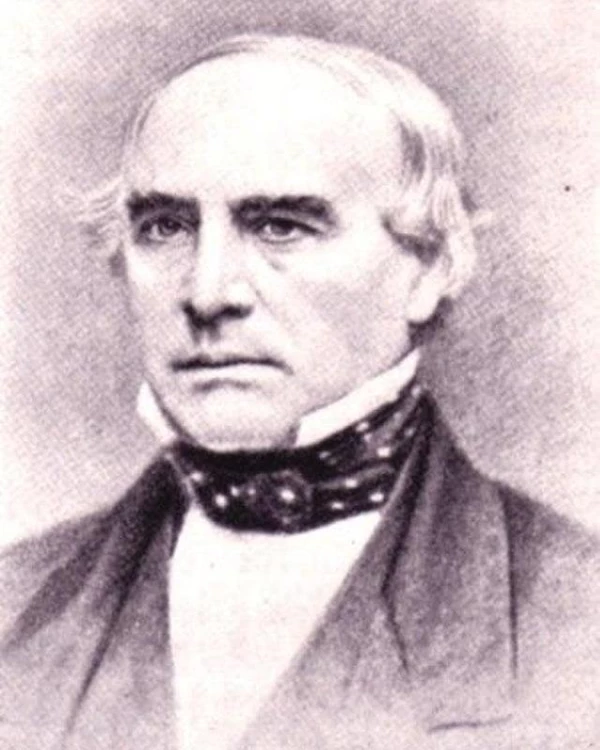Last updated: December 18, 2021
Person
John Butterfield

The New York Times called it a swindle and squander of taxpayers’ money when John Butterfield accepted a $600,000 contract to deliver the St. Louis mail to San Francisco in 25 days. This contract, the largest for land mail service that had yet been given, was authorized by an act of Congress in March 1857.The Pinery Station site commemorates his achievement in transporting the first regular overland mail to California from Missouri in the record-breaking time of 23 days, 23.5 hours.
Born at Berne, New York, in 1801, Butterfield grew up on a farm amidst the revolutionary changes of the first steamboat, the Erie Canal, the steam locomotive, and the electric telegraph. His ambition was to become a professional stage driver, which he did at the age of 19. He diligently saved his earnings, and soon owned and operated a livery business. Butterfield convinced Henry Wells and William Fargo to consolidate their express company with the Butterfield Express Company and form the American Express Company, which Butterfield then directed. He was a natural organizer, with an incredible memory and a generous spirit to share his success. He filled his life with challenging business ventures that were not only profitable, but that also gained him respect and benefited the public.
Although his appearance was stern, he generated a current of enthusiasm all around him, demanding the highest quality of service from his employees in a just and fair manner. He was reserved except for his fashionable dress, which, particularly on western journeys, set a trend across the country. Butterfield coats, shirts, boots, and hats became the rage.
In 1857, most prominent men of his day retired from business at about the age of 56, and Butterfield could have enjoyed the same with his great wealth, reputation, and unimpaired health. He must have realized that a stage mail route was doomed, since the locomotive had already appeared and taken over much of the mail and passenger service in the East. However, he was anxious to see a letter move from east to west by means other than a steamship sailing around South America. Perhaps it was his inborn love of horses, the feel of the reins, and the lure of the open road that motivated him to begin the most outstanding achievement of his career – the Butterfield Overland Mail Route.
Butterfield had never been farther west than Buffalo, New York, so he hired St. John, a young man who had made three trips west and experienced the limitless plains, deserts, barren mountains and the cry of raiding Indians. He instructed St. John and his crew to prepare stations and water storage tanks every 30 miles, because “speed is what we want.” He sent a steady stream of coaches west, over this southern route, each carrying 12,000 letters, as well as passengers.
The stress and strain of the venture, the rerouting of the first route, and the cancellation of the Butterfield Overland mail contract due to the Civil War, caused John Butterfield’s physical breakdown at age 59. He then retired to his home in Utica, New York, where he later suffered a paralyzing stroke. He had established an amazing mail route, the longest in the world, which provided a regular line of communication for Americans separated by almost 2,000 miles of undeveloped wilderness.
